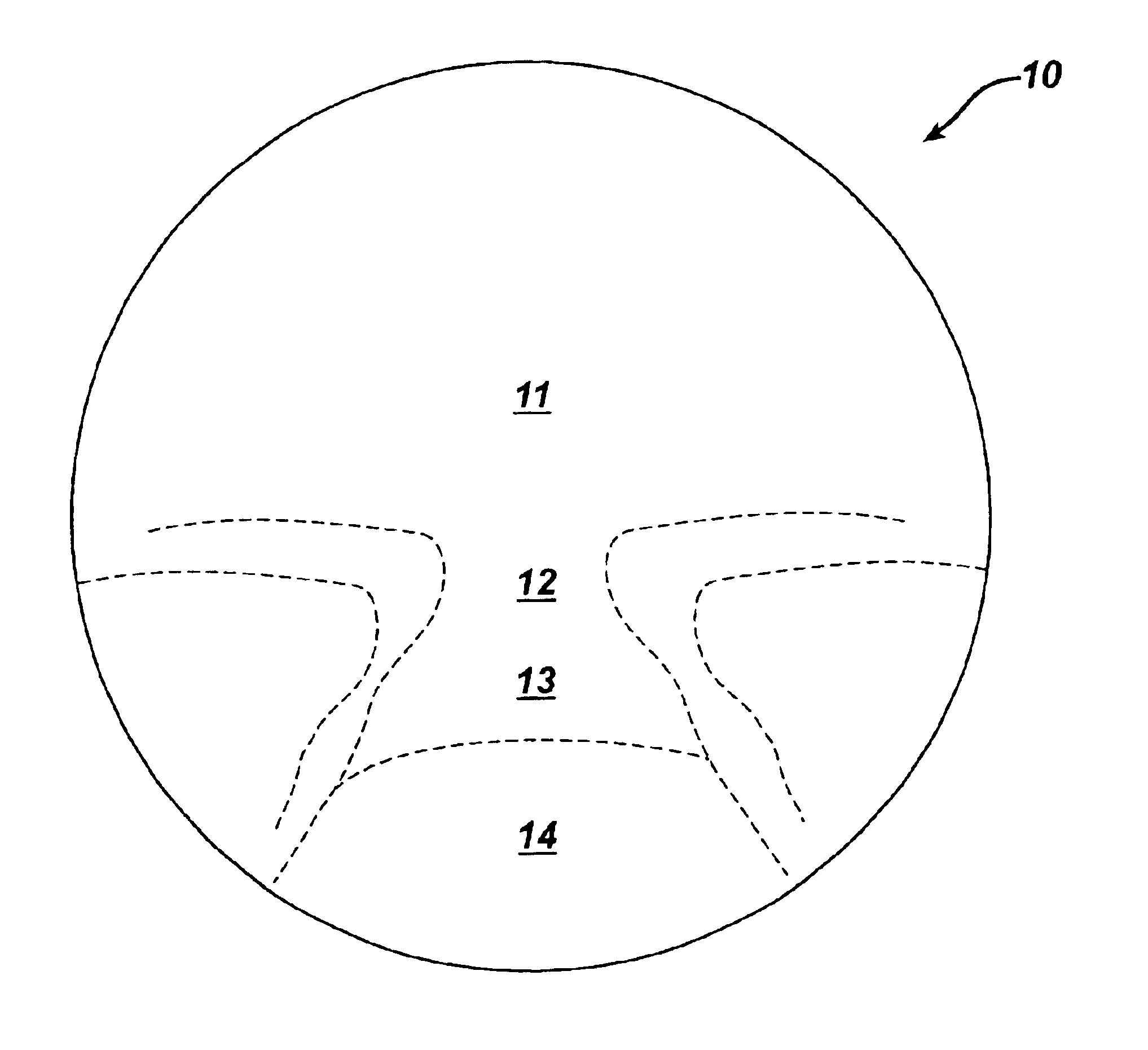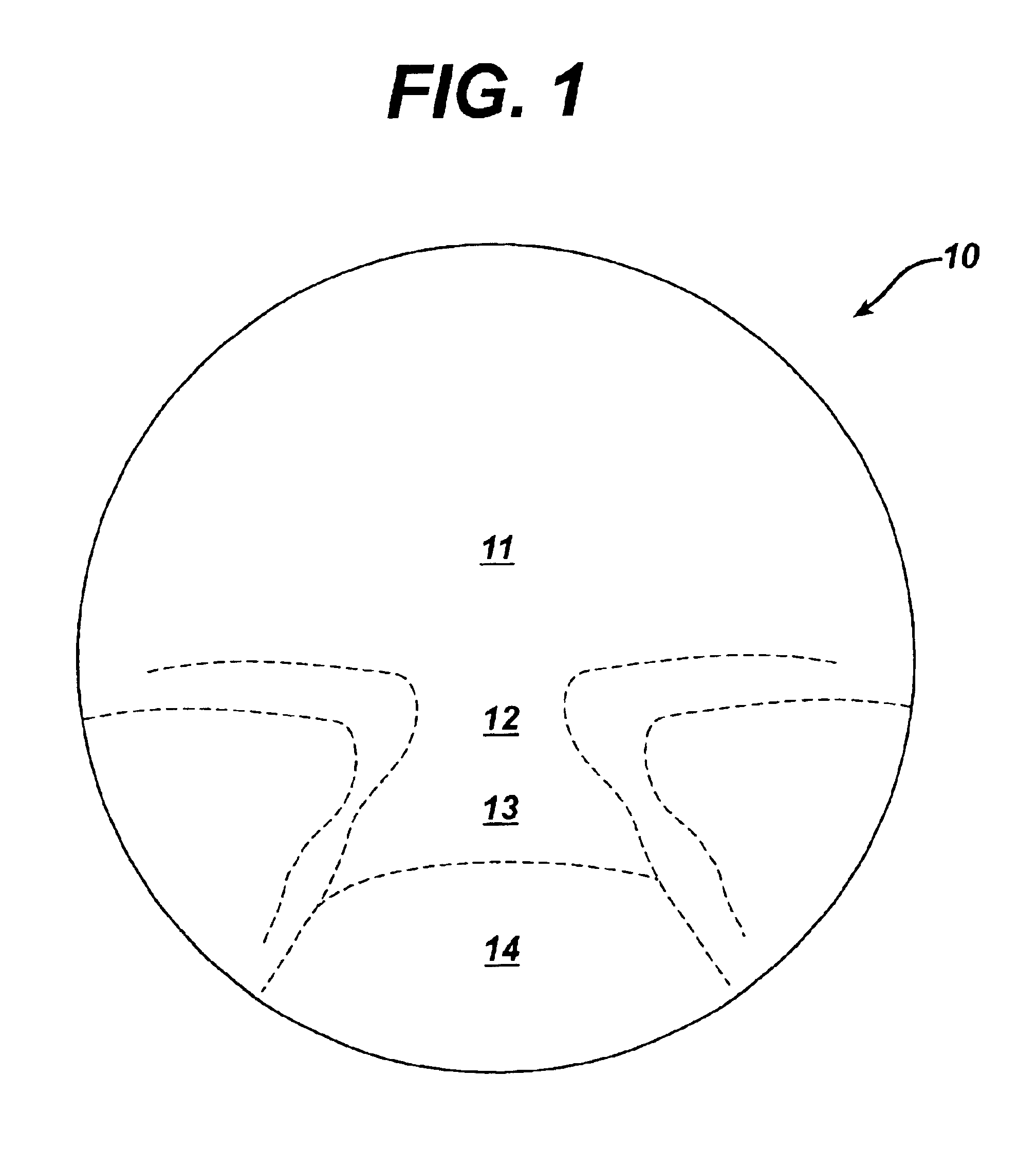Progressive addition lenses with an additional zone
a technology of progressive addition and lens, applied in the field of multi-focal lenses, can solve the problems of affecting the visual effect of objects outside the near vision range, and affecting the visual effect of objects viewed through this portion of the lens,
- Summary
- Abstract
- Description
- Claims
- Application Information
AI Technical Summary
Problems solved by technology
Method used
Image
Examples
example 1
[0028]A 1.498 refractive index conventional progressive addition lens, Varilux COMFORT™ lens, is provided with a convex progressive addition surface and a concave spherical surface. The convex surface distance vision zone curvature is 5.25 diopters and the near vision zone curvature is 7.25 diopters. The channel length is 16 mm. The lens distance power is 0.00 diopters and the dioptric add power is 2.00 diopters. The power contour map for the lens is depicted in FIG. 2, the astigmatic contour map is depicted in FIG. 3., and the channel power profile is depicted in FIG. 4. Line A in the Figure is the add power profile and line B is the unwanted astigmatism. The power remains constant from the beginning of the near vision zone, at about 15 mm below the fitting point, through the lens edge at about 25 mm below the fitting point.
example 2
[0029]A 1.586 refractive index lens of the invention is provided with a convex progressive addition surface with a distance vision zone curvature of 5.60 diopters, a near vision zone curvature of 7.60 diopters resulting in a lens with dioptric add power of 2.00 diopters and a channel length of 17 mm. A fourth zone is designed as a convex spherical surface with a power of 0.78 diopters. An offset, O=0.31 mm and a tilt, T=0.9 degrees is used to match the curvatures of the spherical and progressives surfaces at their boundary. The blending function, F(x,y) is shown in Table 1. The power of the additional zone reaches 0.78 diopters at 22.5 mm below the fitting point. The additional zone is blended along the prime meridian with the near power, but there are peripheral discontinuities on either side of the zone resulting in increased unwanted astigmatism and image jump. The power contour map for the lens is depicted in FIG. 5, the astigmatic contour map is depicted in FIG. 6, and the chan...
PUM
 Login to View More
Login to View More Abstract
Description
Claims
Application Information
 Login to View More
Login to View More - R&D
- Intellectual Property
- Life Sciences
- Materials
- Tech Scout
- Unparalleled Data Quality
- Higher Quality Content
- 60% Fewer Hallucinations
Browse by: Latest US Patents, China's latest patents, Technical Efficacy Thesaurus, Application Domain, Technology Topic, Popular Technical Reports.
© 2025 PatSnap. All rights reserved.Legal|Privacy policy|Modern Slavery Act Transparency Statement|Sitemap|About US| Contact US: help@patsnap.com



